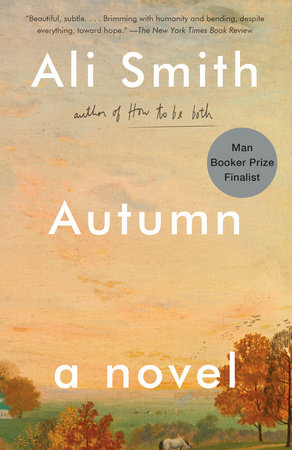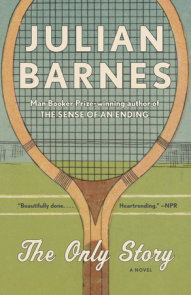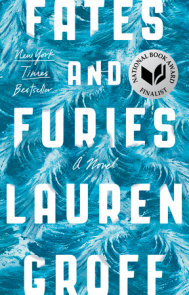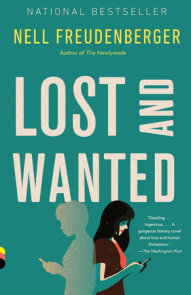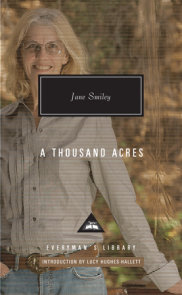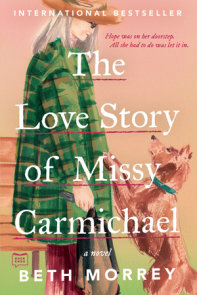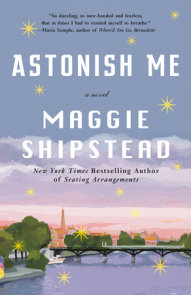READERS GUIDE
The questions, discussion topics, and reading list that follow are intended to enhance your reading group’s discussion of Autumn by Ali Smith. An unconventional love story, Autumn plays across time and history. This is the first of a quartet of novels, Seasonal, four separate but interconnected books that explore what time is, how we experience it, and how we narrate it.Introduction
Autumn. Season of mists and mellow fruitfulness. Two old friends—Daniel, a centenarian, and Elisabeth, born in 1984—look to both the future and the past as the United Kingdom stands divided by a historic, once-in-a-generation summer. Love is won, love is lost. Hope is hand-in-hand with hopelessness. The seasons roll round, as ever.A luminous meditation on the meaning of richness and harvest and worth, Autumn is the first installment of Ali Smith’s Seasonal quartet, and it casts an eye over our own time: Who are we? What are we made of? Shakespearean jeu d’esprit, Keatsian melancholy, the sheer bright energy of 1960s pop art. Wide-ranging in time-scale and light-footed through histories, Autumn is an unforgettable story about aging and time and love—and stories themselves.
Questions and Topics for Discussion
1. How is the story rooted in autumn? Why do you think Ali Smith decided to write a quartet of books about the seasons, the changing of the seasons, and the passing of time? Why did she start with autumn?
2. How is the book obsessed with time? “Time travel is real. We do it all the time. Moment to moment, minute to minute.” (p. 175)
3. Ali Smith stated in an interview with her British publishers, “The way we live, in time, is made to appear linear by the chronologies that get applied to our lives by ourselves and others, starting at birth, ending at death, with a middle where we’re meant to comply with some or other of life’s usual expectations, in other words the year to year day to day minute to minute moment to moment fact of time passing. But we’re time-containers, we hold all our diachrony, our pasts and our futures (and also the pasts and futures of all the people who made us and who in turn we’ll help to make) in every one of our consecutive moments / minutes / days / years, and I wonder if our real energy, our real history, is cyclic in continuance and at core, rather than consecutive.” Do you agree with the author that our history and thus our stories, individual and collective, are cyclical rather than chronological? Discuss this description of time.
4. The novel proceeds with flashbacks interspersed with the present rather than in a consecutive, chronological narrative. Why? And how does this connect with the author’s view on how we perceive time?
5. Describe the friendship between Elisabeth and Daniel and how it evolves through time and the novel. How is their relationship at the heart of the novel? Why does he always ask her, “What are you reading?”
6. How does their friendship revolve around stories, art, and literature?
7. What is the novel saying about creativity and creating and about witnessing and experiencing art and literature? And what is the novel saying about nature and our interactions with it?
8. Describe the relationship of Elisabeth and her mother. How does the relationship blossom by the end of the novel? Why does it change?
9. In Autumn, what is the importance of art and the human connections that come out of art and creativity? Give some examples.
10. How is Autumn collage-like and thus similar to the art of Pauline Boty?
11. Why do you think the author has chosen this real-life artist as a character and inspiration in this novel? What do Boty and her vision and art represent for Daniel and Elisabeth and how does she connect to the themes of Autumn?
12. Continuing with the collage theme, discuss Daniel’s wordplay and intermixing of college and collage. What do you think of the idea of college being a collage of different classes and experiences?
13. Why does the book open with a reference to Charles Dickens’s A Tale of Two Cities, and then there’s a longer reference to a divided country filled with polarities: “All across the country, people felt legitimized. All across the country, people felt bereaved and shocked”? (p. 60) What are the two cities or polarities in the novel?
14. Smith alludes to and mentions many other authors and literary works as well: William Shakespeare, John Keats, James Joyce, Aldous Huxley, George Orwell. Discuss them and why they are relevant to this novel.
15. Many reviewers have called this novel the first post-Brexit novel. What does this mean? How has England changed after the Brexit vote? How does this tie into the United States’ 2016 election, or does it?
16. Find instances of tree imagery throughout the novel and discuss the various descriptions. How do the imagery and arboreal allusions connect with autumn and the changing seasons theme?
17. What is the novel saying about storytelling? “There’s always, there’ll always be, more story. That’s what story is.” (p. 193)
18. Daniel tells Elisabeth, “So, always try to welcome people into the home of your story.” (p. 119). Does this show that our stories don’t belong to us alone? Do you think this is a call by the author for inclusion and diversity rather than building fences and keeping people out?
19. Why doesn’t Daniel tell Elisabeth about his experience during World War II? “I know nothing, nothing really, about anyone.” (p. 171) Can we ever know everything about another person?
20. How does Autumn fuse the present with the past?
21. What is the importance of politics and the effects of politics on the layperson in this novel? What does the fence and defying the fence represent?
22. Both Daniel and Elisabeth’s mother talk about lying and being lied to. Daniel: “The power of the lie . . . Always seductive to the powerless.” (p. 114). Elisabeth’s mother: “I’m tired of people not caring whether they’re being lied to any more.” (p. 57) What are both of them talking about? And what is the connection of lies and truth in the novel?
23. On what note, despair or hope, does the novel end and why?







